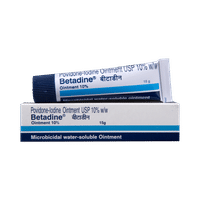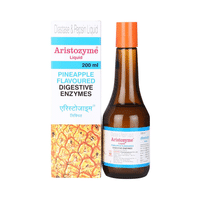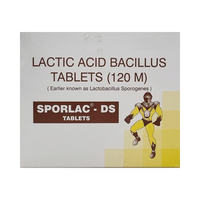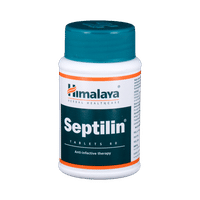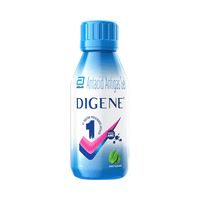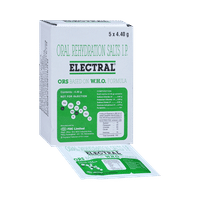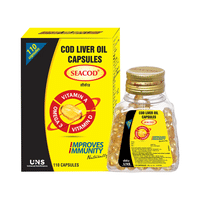O-Dex Eye/Ear Drops
Rs.25.20for 1 bottle(s) (10 ml Eye/Ear Drops each)
Composition FOR O-Dex
Ofloxacin(0.3% w/v),Dexamethasone(0.1% w/v),Hydroxypropylmethylcellulose(0.25% w/v)food interaction for O-Dex
alcohol interaction for O-Dex
pregnancy interaction for O-Dex
lactation interaction for O-Dex
food
alcohol
pregnancy
lactation
No interaction found/established
No interaction found/established
Information regarding the use of O-Dex Eye/Ear Drops during pregnancy is not available. Please consult your doctor.
CONSULT YOUR DOCTOR
Information regarding the use of O-Dex Eye/Ear Drops during breastfeeding is not available. Please consult your doctor.
CONSULT YOUR DOCTOR
SALT INFORMATION FOR O-Dex
Ofloxacin(0.3% w/v)
Uses
Ofloxacin is used in the treatment of bacterial infections. It is also used in infections of urinary tract, gastrointestinal tract, female genital organ, skin & soft tissues and lungs (pneumonia).
How it works
Ofloxacin is an antibiotic. It works by stopping the action of a bacterial enzyme called DNA-gyrase. This prevents the bacterial cells from dividing and repairing, thereby killing them.
Common side effects
Nausea, Headache, Dizziness, Abdominal pain, Itching, Fungal infection, Agitation, Sleep disorder, Insomnia (difficulty in sleeping), Vertigo, Cough, Rash, Anaphylactic reaction, Anxiety, Confusion, Nightmares, Sleepiness, Paresthesia (tingling or pricking sensation), Breathlessness, Bronchospasm, Increased liver enzymes, Genital itching, Vaginal inflammation, Phlebitis, Injection site reactions (pain, swelling, redness), Indigestion, Cognitive impairment, Depression, Abnormal dreams, Eye irritation, Joint pain, Muscle pain, Ringing in ear, Photophobia, Fast heart rate, Hypotension (low blood pressure), Increased creatinine level in blood, Photosensitivity, Inflammation of tendons, Tendon rupture, Psychotic disorder, Liver dysfunction, Pseudomembranous colitis
Dexamethasone(0.1% w/v)
Uses
Dexamethasone is used for Inflammatory conditions and Autoimmune conditions.
How it works
Dexamethasone is a steroid which works by blocking the production of certain chemical messengers in the body that cause inflammation (redness and swelling) and allergies.
Common side effects
Increased appetite, Edema (swelling), Increased intraocular pressure, Decreased potassium level in blood, Tendon rupture, Weight gain, High blood pressure, Increased glucose level in blood, Menstrual disorder, Glaucoma, Slow heart rate, Tachycardia, Arrhythmia (irregular heartbeats), Enlarged heart, Circulatory shock, Fat embolism, Fainting, Thromboembolism, Thrombophlebitis, Vasculitis, Glucose intolerance, Cushing syndrome, Fat accumulation, Conjunctival hemorrhage, Vitreous detachment, Conjunctival hyperemia, Posterior subcapsular cataract, Acne, Allergic dermatitis, Hair loss, Stretch marks, Facial redness, Fragile skin, Skin hyperpigmentation, Hypertrichosis (excessive hair growth), Hypopigmentation, Fluid retention, Growth retardation in children, Excessive hair growth on face, Hypokalemic alkalosis, Negative nitrogen balance, Hiccup, Nausea, Vomiting, Abdominal pain, Pancreatic inflammation, Anal itching, Defective spermatogenesis, Kaposi sarcoma, Hepatomegaly (enlarged liver), Anaphylactic reaction, Sterile abscess, Postinjection flare, Emotional lability, Headache, Idiopathic intracranial hypertension, Increased intracranial pressure, Myasthenia (weakness and rapid fatigue of muscle), Neuropathy, Personality changes, Seizure, Vertigo, Amyotrophy, Bulging eyes, Pulmonary edema, Impaired wound healing, Aseptic necrosis, Muscle weakness, Osteoporosis, Pathologic fracture of long bones, Steroid myopathy, Vertebral compression fractures, Increased liver enzymes
Hydroxypropylmethylcellulose(0.25% w/v)
Uses
Hydroxypropylmethylcellulose is used in the treatment of dry eyes.
How it works
Hydroxypropylmethylcellulose is a lubricant. It works similar to natural tears and provides temporary relief from burning and discomfort due to dryness of the eye.
Common side effects
Blurred vision, Eye pain, Eye irritation, Eye itching, Eye discharge, Increased lacrimation, Hypersensitivity, Ocular hyperemia, Superficial corneal injuries, Corneal abrasion
SUBSTITUTES FOR O-Dex
1 Substitutes
1 Substitutes
Sorted By
- Ofshot D Eye/Ear Drops(10 ml Eye/Ear Drops in packet)Maksun Biotech Pvt LtdRs. 4.80/ml of Eye/Ear Drops
 Rs. 50pay 90% more per ml of Eye/Ear Drops
Rs. 50pay 90% more per ml of Eye/Ear Drops
Expert advice FOR O-Dex
- Your doctor has prescribed Ofloxacin to cure your infection and improve symptoms.
- Do not skip any doses and finish the full course of treatment even if you feel better.
- Discontinue Ofloxacin and inform your doctor immediately if you get a rash, itchy skin, swelling of face and mouth, or have difficulty in breathing.
- Diarrhea may occur as a side effect but should stop when your course is complete. Inform your doctor if it doesn't stop or if you find blood in your stools.
- Notify your doctor if you feel pain in your tendons, numbness, or tingling sensations.
- Inform your doctor if you are pregnant or planning to conceive or breastfeeding.
Frequently asked questions FOR O-Dex
Ofloxacin
Q. Can the use of Ofloxacin cause diarrhea?
Yes, the use of Ofloxacin can cause diarrhea. It is an antibiotic which kills the harmful bacteria. However, it also affects the helpful bacteria in your stomach or intestine and causes diarrhea. If you are experiencing severe diarrhea, talk to your doctor about it.
Q. Can I stop taking Ofloxacin when I feel better?
No, do not stop taking Ofloxacin and complete the full course of treatment even if you feel better. Your symptoms may improve before the infection is completely cured.
Q. Can the use of Ofloxacin increase the risk of muscle damage?
Yes, use of Ofloxacin is known to increase the risk of muscle damage, commonly in the ankle (achilies tendon). Muscle damage can happen in people of all ages who take Ofloxacin. Inform your doctor if you feel any kind of muscle pain while using this medicine.
Dexamethasone
Q. Is Dexamethasone a steroid?
Yes, Dexamethasone is a steroid medicine also known as glucocorticoids which occur naturally in the body and help to maintain health and wellbeing. Dexamethasone helps in treating various illnesses involving inflammation (redness, tenderness, heat and swelling) in the body.
Q. What is Dexamethasone used for?
Dexamethasone has anti-inflammatory and immunosuppressant properties. It is used to treat conditions like allergic conditions, anaphylaxis, asthma, rheumatoid arthritis and inflammatory skin diseases. It also aids in treating autoimmune diseases (these diseases happen when your body’s immune system attacks the body itself and causes damage) and certain eye disorders. Additionally, it is used to treat cancer and nephrotic syndrome when used with other medicines.
Q. How is Dexamethasone administered?
Dexamethasone should be administered by a doctor or under the supervision of a healthcare professional and should not be self-administered. Usually, it is given into a muscle (intramuscular), joint (intra-articular), directly into a vein (direct intravenous), infusion or into the area being treated (soft tissue infiltration). The dose will be decided by your doctor based on the condition you are being treated for as well as your body weight. Follow your doctor’s instructions carefully to get the maximum benefit from Dexamethasone.
Hydroxypropylmethylcellulose
Q. What is Hydroxypropylmethylcellulose?
Hydroxypropylmethylcellulose belongs to a class of medicines called eye lubricants or artificial tears. It is available as eye drops. It is used to soothe irritation, burning and discomfort of dry eye conditions. One may experience such conditions because of deficient tear production, infrequent blinking, smoke, wind, pollution, extended use of computer screen or television, medical treatment or dry atmospheric conditions. Hydroxypropylmethylcellulose may also be used to aid insertion of lenses or to make the lenses more comfortable while wearing.
Q. Is Hydroxypropylmethylcellulose effective?
Hydroxypropylmethylcellulose is effective if used in the dose and duration advised by your doctor. Do not stop taking it even if you see improvement in your condition. If you stop using Hydroxypropylmethylcellulose too early, the symptoms may return or worsen.
Q. How should Hydroxypropylmethylcellulose be used?
If you are using it for dry eyes, instil 1 or 2 drops in the affected eye(s) as needed. If you are using it to lubricate soft and rigid gas-permeable lenses, apply 1 to 2 drops to each eye with the lenses on as needed or as directed by your doctor. Blink several times after pouring the drops. Consult your doctor if you are not sure.













